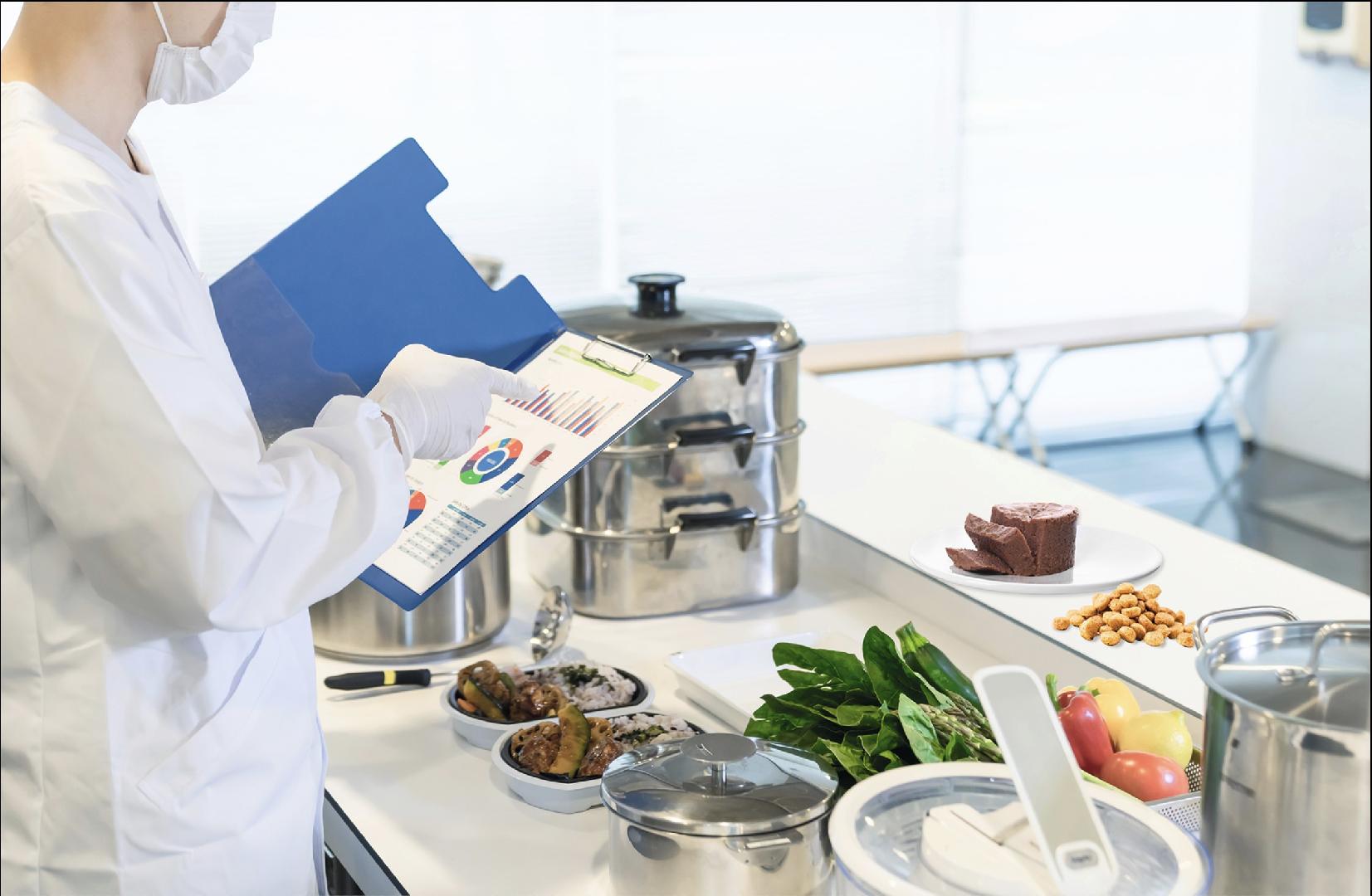The main problem when formulating foods is to satisfy the nutrient requirements. Then, we talk about formulating a balanced food. There are several methods used to balance rations, from the simplest to the most complex and technical ones. Among them, we can find trial and error, simultaneous equations, Pearson's square, and linear programming. For balancing rations, ingredients are combined to meet the protein, fat, fiber, amino acids, fatty acids, vitamins, and minerals that pets require for health and well-being.
Within the formula of the balanced pet food (the recipe), two ingredients require special attention in their precision. I am talking about the vitamin premix and the mineral premix, which are generally separate formulas, as they are made up of more than one nutrient inside.
The amounts of vitamins and trace minerals required are few, and they are in the order of micrograms or a few milligrams per day. That is why it has been decided to add them through a premix. Vitamins and trace minerals are essential substances for life. If we supply less than their daily requirement, we will certainly see how the subject develops severe deficiency symptoms that lead to manifestations of deficiency or syndromes.
Regularly, the pet food formula contains 1 or 2 of these ingredients: a premix of vitamins and minerals when it is one, or a premix of vitamins and premix of minerals when it is two. Now we analyze the design of the premix formulation that will be included in the complete pet food.
The steps in a premix formulation are
Defining the premix
- The first step will be to know which species it aims for: dog, cat, or something else.
- Then it has to be decided which pet's life stage is: age, size, weight, activity level, race, physical problems, and the like.
- Our "claim," or value proposition, which can go into the premix.
- What kind of pet food are we going to manufacture? This can be dry, humid, or semi-humid, in very general terms.
- Gathering the data of the process parameters, as well as temperatures, humidity, pressures, and times, among others.
- Knowing the rest of the ingredients of the complete formula of the balanced food: corn, meals of animal origin, oilseed pastes, additives, etc.
- Having a well-defined shelf life which we must guarantee, be it one or two years.
Ingredient selection
- Speaking of vitamins, their forms must be selected according to the production process the food will undergo: microspheres, spray-dried, coated crystals, adsorption, etc.
- Regarding trace minerals, we must consider that the inorganic source will affect the vitamins more than the organic or hydroxy sources.
- Also, we should keep in mind that trace minerals vary in molecular structure as well as in performance in animals.
- It must also be considered that the premix can be the means to add other ingredients that require precision, such as omegas, some vegetables, mycotoxin binders, and natural or synthetic antioxidants, among others.
- The vehicle is an important player in the design because it will give it density and properties for correct mixing. They can be vegetables, minerals, or both.
Estimating the super-addition, mainly in vitamins
- Any portion of food must meet the nutritional requirements indicated by international guides such as AFFCO, FEDIAF, or NRC. Therefore, the final product must contain this recommended minimum level at the end of its shelf life. I always suggest starting with a safety margin, that is, above the minimum level suggested by nutritional guidelines. This way, even if the dog or cat eats a little less, or has a higher consumption than the average, that daily dose would ensure that symptoms of vitamin deficiency will not occur.
- The food manufacturing process involves temperature, humidity, pressure, oxygen, and more. If one or more of these elements affect the vitamins, an over-addition is necessary to compensate for the loss due to processing, so we can reach the desired level.
- Once the food leaves the production line, it will travel to the market, where it will be available for the pet parent to purchase. In addition, it can also remain on the shelf for some time, and we must also consider a loss due to storage.
Premix test
- The design of the premix on paper is one and, in reality, things may be different. That is why it is important to produce a sample and carry out a mixture, content, and physical analysis.
- If the premix complies with what was designed, food manufacturing should be run and, once again, carry out a content analysis – now of the pet food–.
- We should not forget the shelf life analysis.
Final part
- When the premix complies with the design, and we know the product physically, we need our plant personnel to be trained on the importance of this ingredient and the care that must be given to it.
- Once we have finished the premix, let's take it to production!
Pet food formulation must be adequate and precise, particularly with two micronutrients that must have our attention during the formulation: vitamins and trace minerals.
The design of the vitamin and mineral premix is as relevant as the design of the food itself, and their development process should be as meticulous as possible.
By: Armando Enríquez de la Fuente Blanquet
Source: All Pet Food Magazine
You could be interested: Understanding Minimally Processed: What It Really Means for Your Pets Food
About author
Armando Enriquez de la Fuente BlanquetArmando Enríquez is from Mexico and, currently, works at Novus International as a Regional Country Manager, Mexico. Before, he worked at Trouw Nutrition Mexico as Feed Additives & Key Accounts Manager; he is also part of the company’s Global Companion Animal Community. He worked for DSM Nutritional Products in various positions: as a Marketing Manager in Pet Nutrition in Latin America, Vitamins Technical Manager in Latin America, Food Chain Project Manager and Commercial Manager in Mexico. He also worked at Roche Products as a Pets Project Manager, Ruminants Project Manager and Commercial Manager. He publishes editorials in specialized magazines in the Petfood industry and has lectured at the Andean Pet Forum in Colombia and at the Pet Forum, Mexico. He is a Veterinary Zootechnician from the National Autonomous University of Mexico and has a master's degree in Business Administration from the ITESO University.





































